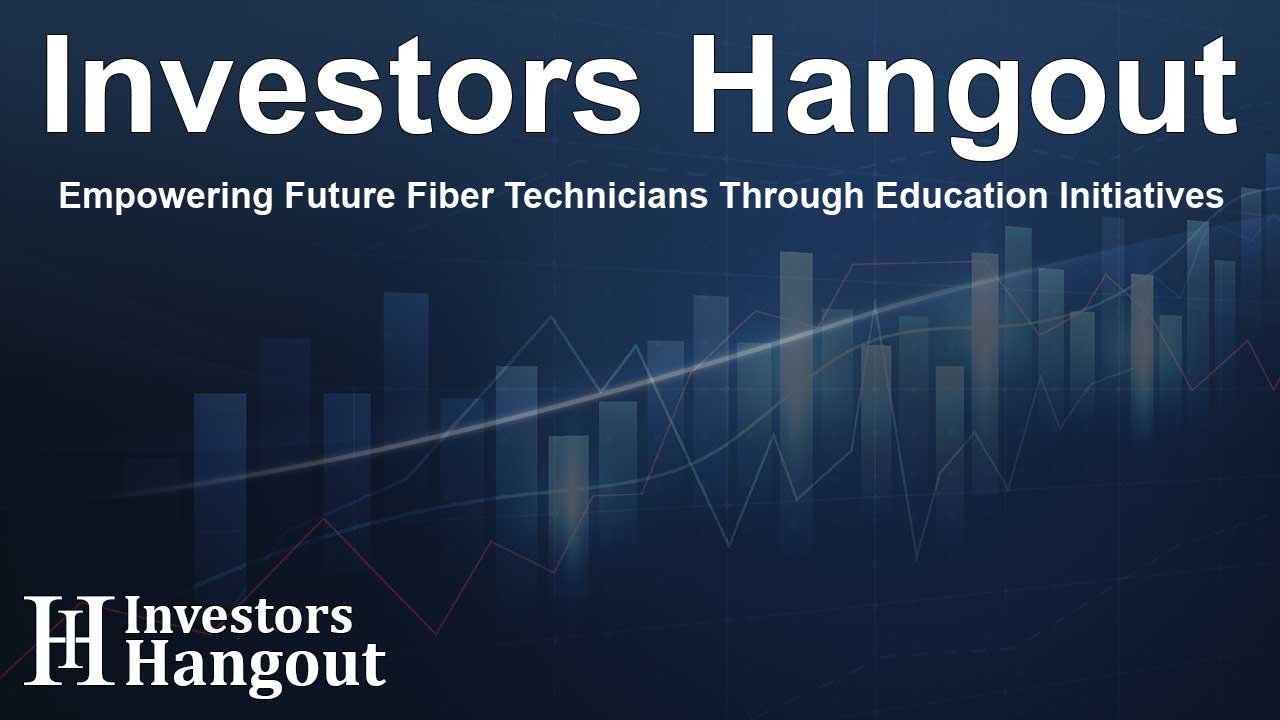Empowering Future Fiber Technicians Through Education Initiatives

Empowering Future Fiber Technicians Through Education Initiatives
The Fiber Broadband Association (FBA) has exciting news as it expands its OpTIC Path™ program, welcoming schools from various states to offer essential training in fiber broadband installation. This expansion comes at a crucial time, with an anticipated demand for 180,000 new workers over the next decade. This need arises from the growth of the $42.45 billion Broadband Equity Access and Deployment (BEAD) program and highlights the importance of skilled technicians in the fiber broadband sector.
Importance of Fiber Broadband Training
In the modern digital landscape, fiber broadband has become a vital resource, and the skills required for its installation and maintenance are in high demand. The OpTIC Path program is designed not only to fill the current workforce gap but also to equip future technicians with the skills necessary for a sustainable career. By offering tailored training, FBA helps students gain a competitive edge and jumpstart their careers in fiber broadband.
FBA’s Vision for the Future
Deborah Kish, Vice President of Research and Workforce Development at FBA, emphasizes the urgency of training the next generation of fiber technicians to ensure the successful deployment of fiber networks. The association's commitment to this goal is clear as it continues to expand the OpTIC Path program across various educational institutions. Kish believes that together, they can create ample opportunities for rewarding careers in the fiber industry.
Engagement with Educational Institutions
FBA's partnership with other organizations, such as the Wireless Infrastructure Association (WIA), further demonstrates its dedication to broadening the reach of the OpTIC Path program. By integrating this program into WIA's Telecommunications Education Center curriculum, they aim to enhance training for aspiring technicians. Recently, schools like Morrison Institute of Technology, Southside Virginia Community College, and others joined the program, enriching their educational offerings.
The Impact on Local Communities
The implementation of the OpTIC Path program has notably benefited communities like Bledsoe County. The local school district recognizes the program's significance, as fiber broadband careers not only promise stability and growth but also fulfill a crucial demand for skilled workers. This training prepares students to address the needs of their communities effectively, particularly as the state plans to utilize substantial funding from the BEAD program.
Opportunities for Growth and Development
Training in fiber broadband installation through the OpTIC Path program provides students with an array of opportunities. As technicians graduate, they not only embark on rewarding careers but also contribute positively to their communities. The program has demonstrated that no prior technical or college degree is necessary, making it accessible to a broader range of individuals. This inclusivity is a crucial factor driving the program's success and expanding interest in fiber careers.
The Role of Industry Partnerships
FBA collaborates with over 44 service providers and 70 educational institutions to promote the OpTIC Path program effectively. These partnerships enable employers to work alongside schools, guaranteeing a comprehensive pool of certified technicians entering the workforce. Moreover, companies in the fiber broadband space increasingly incorporate the OpTIC Path program into their workforce strategies, supporting ongoing employee development and skills enhancement.
The Way Forward with Fiber Broadband
As FBA continues to expand its reach across 40 of its targeted 56 states and territories, the OpTIC Path program has quickly gained traction among educational and industry sectors. The growth reflects a shared vision of a well-trained workforce ready to meet the demands of the fiber broadband industry. With this committed approach, the future of fiber broadband looks promising, paving the way for a digitally connected world.
Frequently Asked Questions
What is the OpTIC Path program?
The OpTIC Path program is an initiative by the Fiber Broadband Association to train individuals in fiber optic technology, preparing them for careers in the broadband sector.
How many schools are participating in the OpTIC Path program?
Numerous schools across multiple states are now offering the OpTIC Path program, with the FBA continuously adding more institutions to this network.
What skills does the OpTIC Path program provide?
The program equips students with essential fiber installation and maintenance skills, catering to the growing demand for fiber broadband technicians.
Are there any qualifications required to join the program?
No prior technical or college degree is necessary to participate in the OpTIC Path program, making it accessible to a wide range of individuals.
How does the OpTIC Path program benefit local communities?
By training technicians, the program helps fulfill local workforce needs, supporting community development and the successful implementation of fiber broadband services.
About Investors Hangout
Investors Hangout is a leading online stock forum for financial discussion and learning, offering a wide range of free tools and resources. It draws in traders of all levels, who exchange market knowledge, investigate trading tactics, and keep an eye on industry developments in real time. Featuring financial articles, stock message boards, quotes, charts, company profiles, and live news updates. Through cooperative learning and a wealth of informational resources, it helps users from novices creating their first portfolios to experts honing their techniques. Join Investors Hangout today: https://investorshangout.com/
Disclaimer: The content of this article is solely for general informational purposes only; it does not represent legal, financial, or investment advice. Investors Hangout does not offer financial advice; the author is not a licensed financial advisor. Consult a qualified advisor before making any financial or investment decisions based on this article. The author's interpretation of publicly available data presented here; as a result, they should not be taken as advice to purchase, sell, or hold any securities mentioned or any other investments. If any of the material offered here is inaccurate, please contact us for corrections.